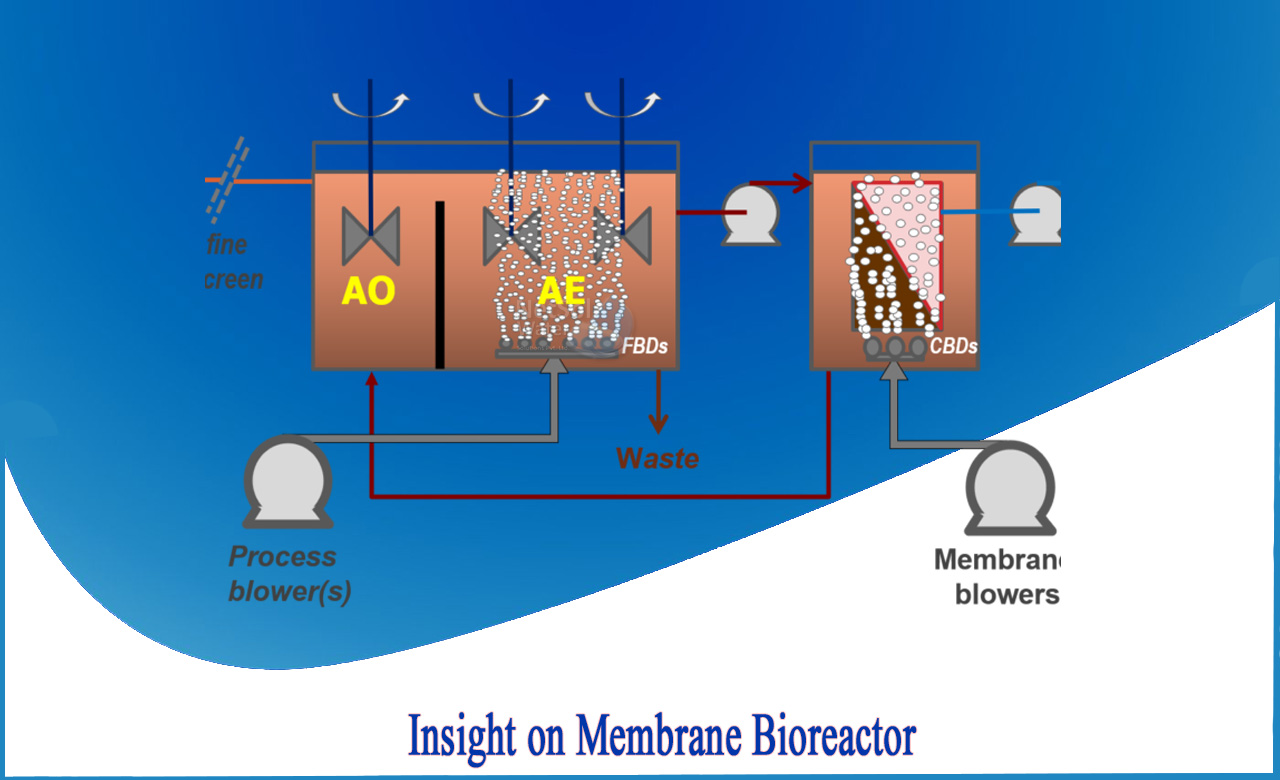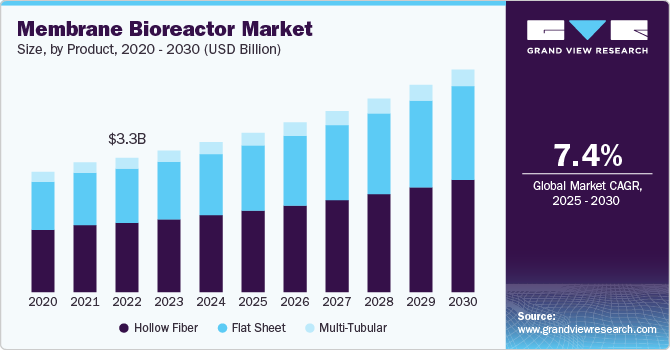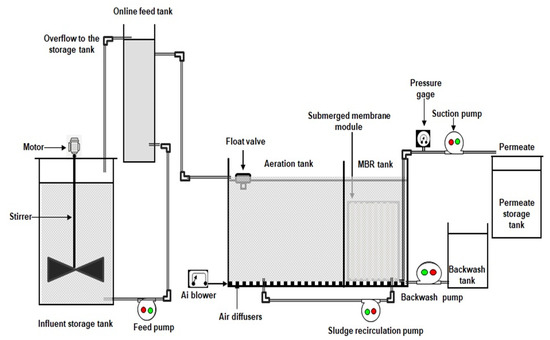How Membrane Bioreactor Can Help Meet Stringent Environmental Regulations
Wiki Article
Membrane Bioreactors Explained: Efficient Solutions for Clean Water
Membrane layer bioreactors (MBRs) have emerged as a sophisticated option for dealing with the pushing challenges of wastewater therapy - Membrane Bioreactor. By integrating organic procedures with sophisticated membrane purification, MBRs not only enhance the high quality of treated water however likewise reduce the spatial requirements of treatment facilities.
What Are Membrane Layer Bioreactors?
Membrane bioreactors (MBRs) are innovative wastewater therapy systems that incorporate organic deterioration processes with membrane filtration technology. This assimilation enables for the efficient elimination of contaminants from water, making MBRs a recommended selection in different applications, including municipal wastewater therapy and industrial effluent management.
Among the important advantages of MBRs is their capacity to create top notch effluent, commonly suitable for reuse in watering or commercial procedures. Furthermore, MBRs call for a smaller impact compared to traditional therapy systems, making them perfect for city settings where room may be limited.
In addition, MBRs can successfully handle differing influent tons and are less prone to the results of hazardous shocks. These characteristics add to their growing appeal as a lasting service for resolving the enhancing need for tidy water while lessening environmental effects.
Just How Membrane Layer Bioreactors Work
While the procedure of membrane bioreactors (MBRs) may seem facility, it fundamentally focuses on the synergy between biological processes and membrane purification. MBRs integrate an organic therapy process, usually activated sludge, with a membrane separation device to deal with wastewater successfully.In an MBR system, wastewater is first introduced into a bioreactor where microorganisms break down raw material and other impurities. The biological activity decreases the concentration of contaminants while promoting the development of biomass. Following this organic therapy, the blended liquor goes through membrane filtering, which can be microfiltration or ultrafiltration, depending upon the wanted effluent top quality.
The membranes work as a physical barrier, enabling water and small solutes to pass while maintaining put on hold solids and bigger particles. This allows the system to keep a high focus of biomass within the activator, improving the treatment effectiveness.
In addition, the continual splitting up of treated water from the biomass assists in a portable layout and lessens the impact of the treatment center. Generally, the combination of biological destruction and membrane layer purification in MBRs leads to reliable and reliable wastewater therapy, guaranteeing top quality effluent appropriate for different applications.
Advantages of MBR Modern Technology
One of the essential advantages of membrane layer bioreactor (MBR) innovation is its ability to generate high-quality effluent with a significantly lowered footprint compared to conventional wastewater therapy methods. MBR systems properly integrate biological treatment and membrane layer filtration, causing exceptional elimination of contaminants, consisting of suspended solids, virus, and raw material. This ability brings about effluent that frequently fulfills or surpasses stringent governing requirements for reuse and discharge.Additionally, MBR innovation permits greater biomass focus, which enhances the therapy efficiency and decreases the called for activator check my reference quantity. This compact style is specifically useful in urban locations where room is limited. The functional versatility of MBR systems also implies they can adjust to differing influent top qualities and flow rates, making them ideal for a wide array of applications.
Furthermore, the lowered sludge manufacturing associated with MBR procedures adds to reduce functional and upkeep expenses. The membrane layers act as a physical barrier, reducing the danger of clogging and making it possible for longer operational periods between cleaning. Generally, the benefits pop over here of MBR modern technology make it an appealing option for sustainable wastewater therapy, attending to both environmental concerns and the need for efficient resource management.
Applications of Membrane Layer Bioreactors
With their versatility and efficiency, membrane layer bioreactors (MBRs) locate applications across various industries, including community wastewater therapy, commercial procedures, and also water improvement. In metropolitan settings, MBRs supply a small option for treating wastewater, effectively getting rid of contaminants while all at once creating premium effluent that satisfies strict regulatory criteria. This makes them specifically ideal for locations with limited area.In commercial applications, MBR innovation is utilized for dealing with procedure water, specifically in markets such as food and beverage, drugs, and petrochemicals. These industries gain from MBRs' ability to take care of high organic loads and their performance in recouping valuable resources from wastewater, such as nutrients and water.
Moreover, MBRs play a critical duty in water reclamation initiatives, enabling the reuse of treated wastewater for irrigation, commercial processes, or perhaps as safe and clean water after additional therapy (Membrane Bioreactor). Their effectiveness in getting rid site link of pollutants and pathogens makes them a reputable choice for making certain water quality in different reuse applications
Future of Water Treatment Solutions
The future of water therapy services is positioned for transformative developments driven by technological development and enhancing ecological recognition. As worldwide water shortage ends up being a pressing problem, new approaches, including membrane layer bioreactor (MBR) systems, are established to play a pivotal duty in improving the performance and sustainability of water therapy processes.Arising innovations such as man-made knowledge and artificial intelligence are expected to optimize treatment procedures, enabling real-time tracking and anticipating upkeep. This will certainly improve the total integrity and efficiency of water therapy facilities. Moreover, innovations in membrane products, such as graphene and nanofiltration, promise to increase permeation rates and reduce fouling, bring about lower energy consumption and operational costs.
In addition, the assimilation of eco-friendly power sources right into water treatment plants will certainly add to greener practices. The circular economic situation version will certainly additionally gain grip, urging the recovery of valuable sources from wastewater, such as nutrients and power.
Conclusion

Membrane layer bioreactors (MBRs) have actually emerged as an innovative solution for addressing the pressing challenges of wastewater therapy. By incorporating biological processes with sophisticated membrane layer purification, MBRs not only boost the quality of treated water but also decrease the spatial demands of treatment centers.One of the vital advantages of membrane bioreactor (MBR) innovation is its ability to generate high-quality effluent with a substantially minimized footprint contrasted to standard wastewater treatment techniques.With their flexibility and efficiency, membrane bioreactors (MBRs) discover applications throughout numerous sectors, consisting of metropolitan wastewater therapy, commercial processes, and even water improvement.In final thought, membrane layer bioreactors represent a substantial advancement in wastewater treatment modern technology, incorporating organic processes with efficient membrane layer filtration to create top quality effluent.
Report this wiki page